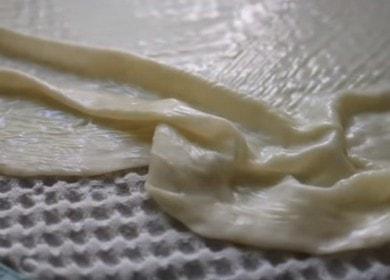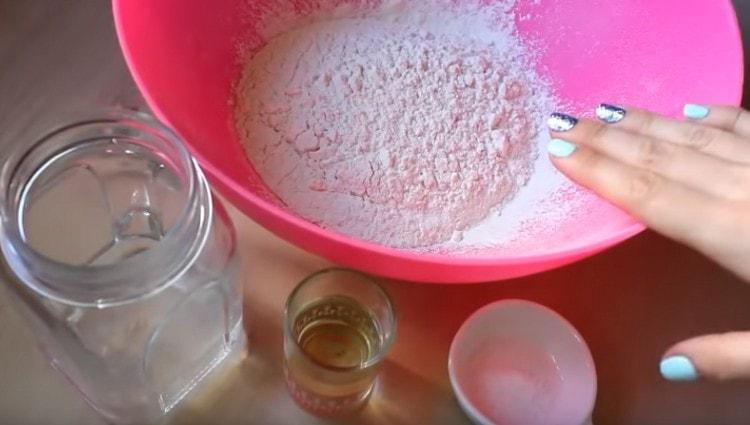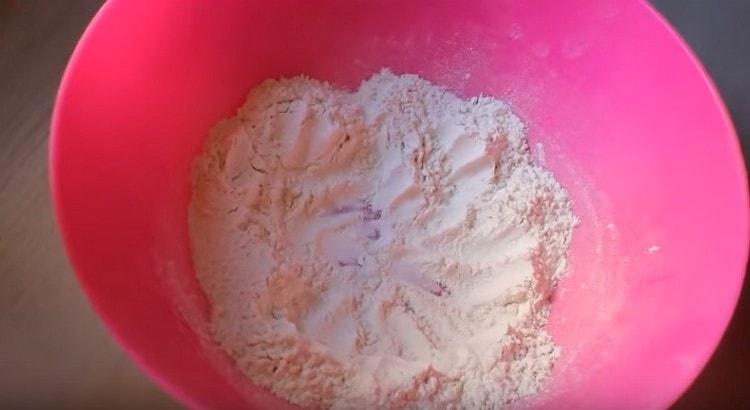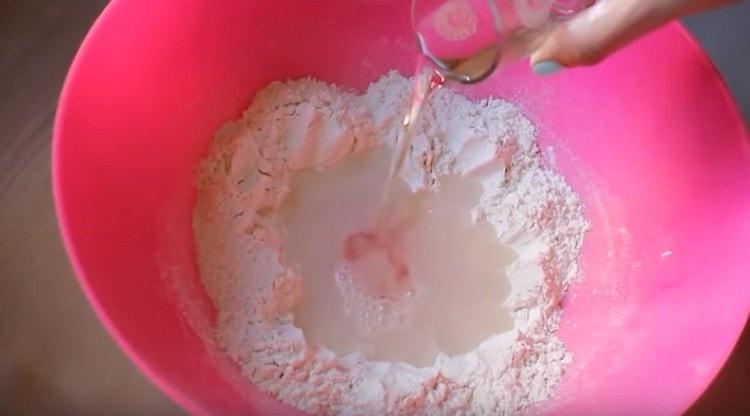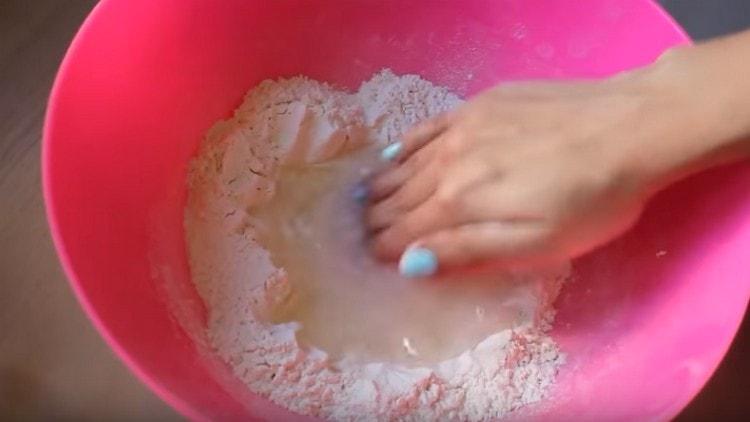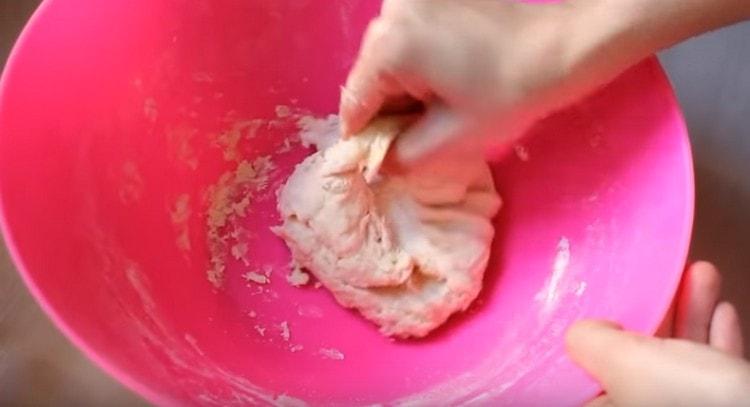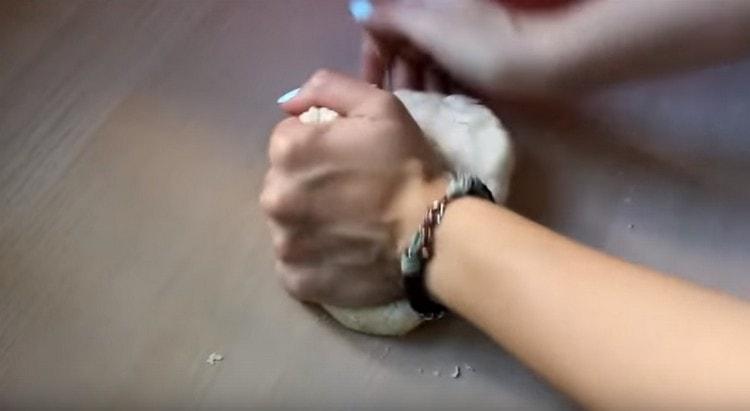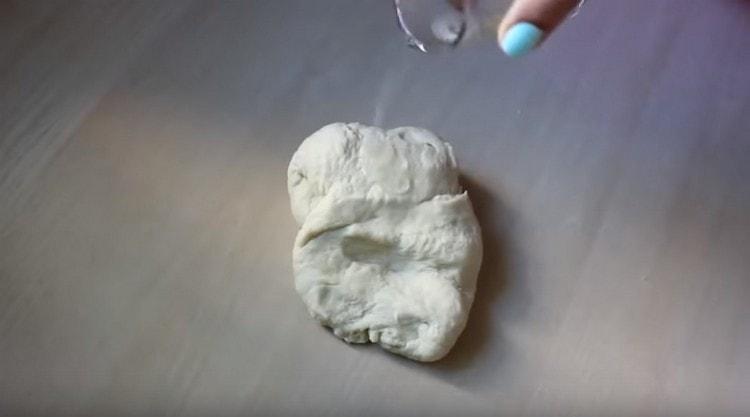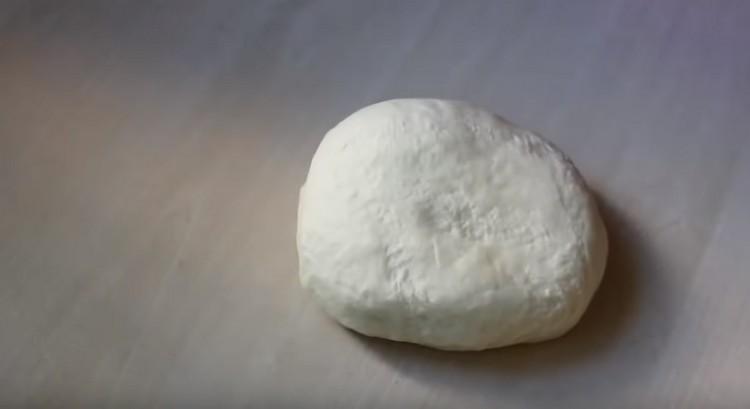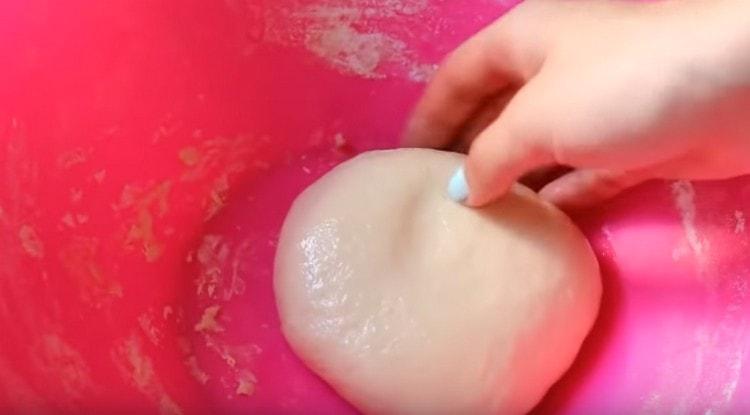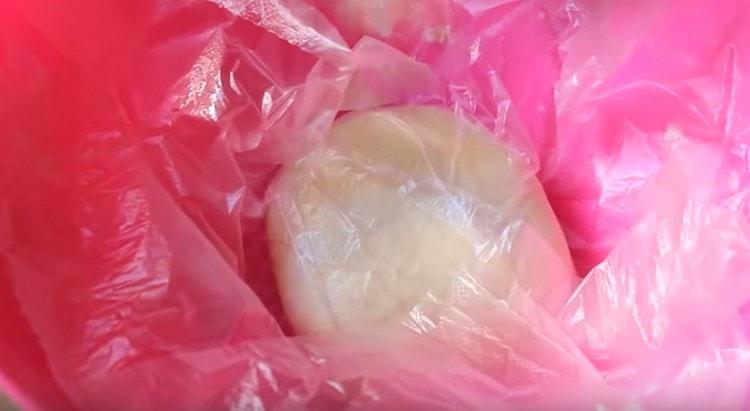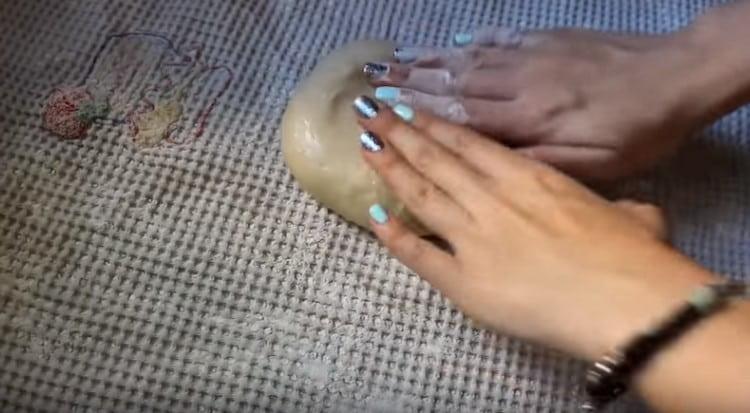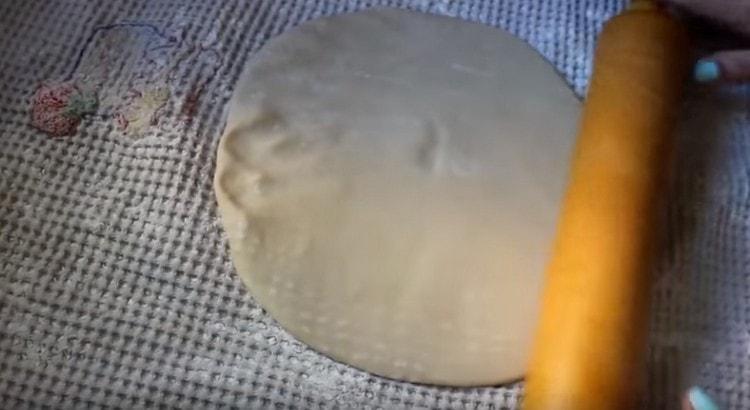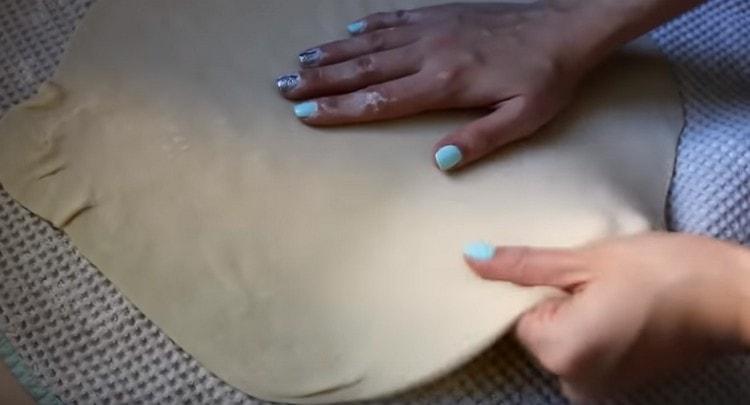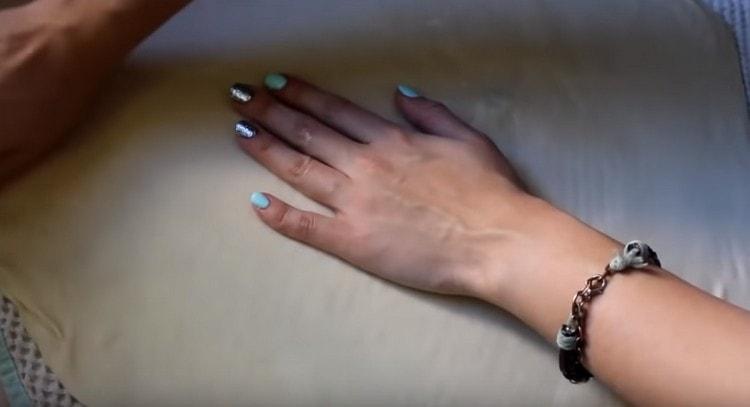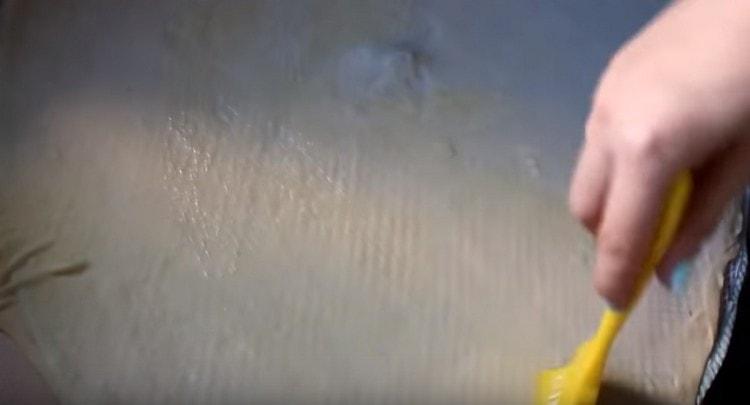Kitchen appliances and utensils: bowl for dough, worktop, kitchen film, towel, rolling pin, cooking brush.
Ingredients
| Product | amount |
| Flour (sifted) | 200 g |
| Salt | 1 pinch |
| Sunflower oil | 30 g |
| Plain water | 100 ml |
| Butter | 50 g |
Step cooking
- Sift the flour well first. It will be good if you sift it two or three times. Pour the flour into a small bowl.

- Add salt to it. Mix well.

- Then make a hole in the center with your hands.

- Pour in 100 milliliters of water. Then add 20 milliliters of sunflower oil.

- Stir a little in the center with your hand, and then start kneading the dough itself.

- At first, the dough will be loose and naughty, but in the process it will begin to gather in a lump. Keep kneading it thoroughly.

- After two or three minutes, the dough almost stops sticking to your hands.

- Move the dough onto a work surface. Continue to knead thoroughly, as its quality depends on how you knead it. You can even beat and roll the dough.

- Stir for ten minutes. In no case do you need to add flour. Otherwise, the dough will acquire a different structure, become stiff and will not stretch well.

- Pour the remaining butter (10 milliliters) onto the dough and now continue to mix well. It may seem that the test is not enough, but when you start to pull it, it will be quite a lot.

- Now form a lump from the dough, roll it up a little from the bottom.

- Move the dough back into the bowl. Add quite a bit of oil and lubricate the lump.

- Cover it on top with a film or plastic bag. Put the dough in the refrigerator for forty minutes.

- Remove the dough from the refrigerator and start rolling. Take any large clean towel, it doesn’t matter if it is corrugated or even. Pour flour onto a towel. Put the dough in the middle.

- First, roll it out a little with your hands, and then continue this process with a rolling pin. For convenience, you can rotate the dough so that it rolls better.

- When the dough is rolled out about half the towel, it's time to start pulling it out. Put your hand in the middle of the dough and from the middle begin to gently pull the dough towards you.

- It's okay if in the process the dough can break somewhere, holes can be sealed. The most important thing is to make the dough as thin as possible. Periodically, you can take a rolling pin to roll to the very edges.

- It is equally important to quickly work with the test, as it becomes brittle and dries quickly. When the dough is completely rolled out and stretched, it is necessary to grease it with oil. Take 50 grams of melted butter and grease the dough with a cooking brush.

- This is done so that the dough does not dry out and does not air. The dough is ready!

Video recipe
Watch a fascinating and useful master class on how to make this perfect dough yourself. All the nuances and details of the cooking process are highlighted. Enjoy watching!
